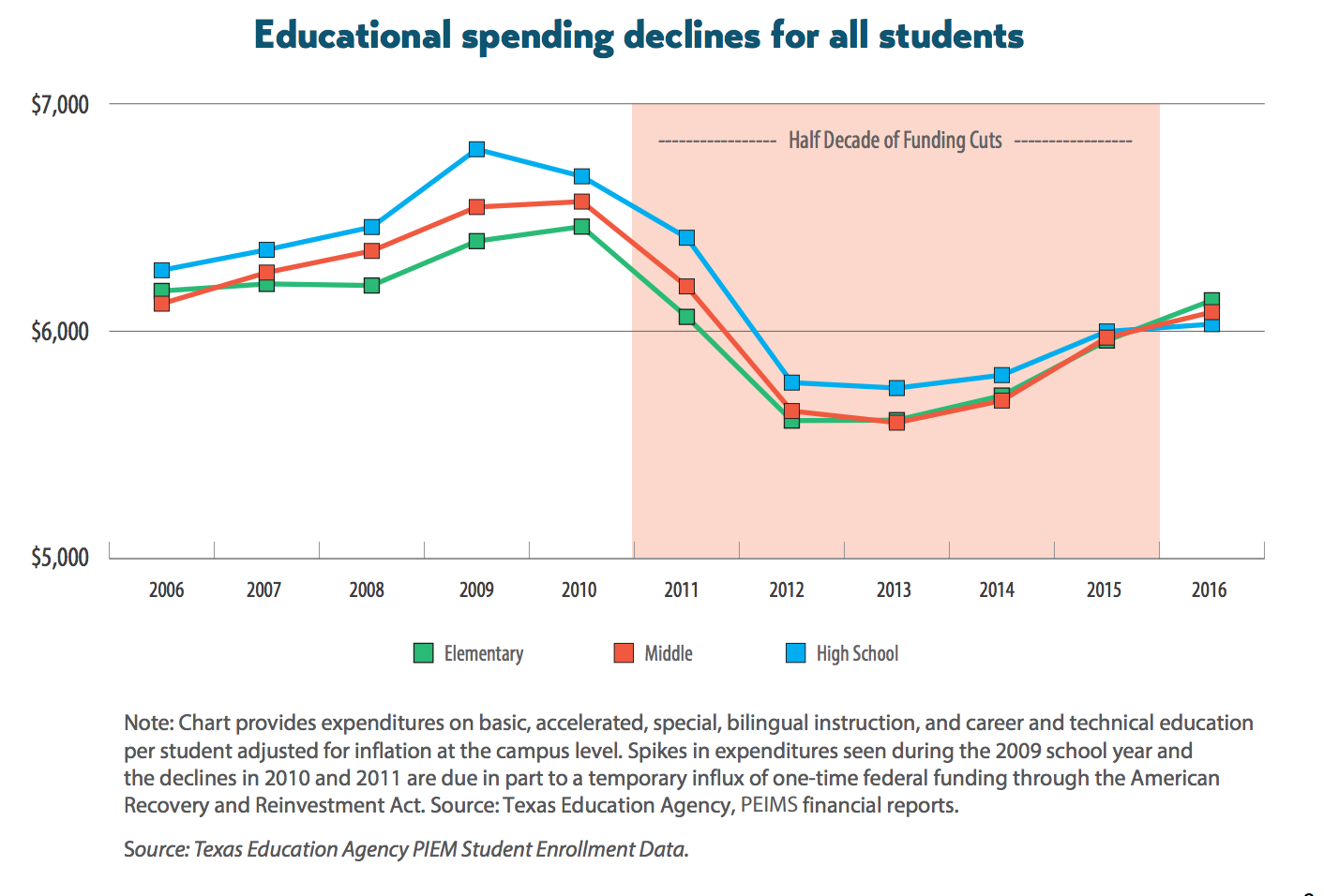When Texas lawmakers were eyeing billions in cuts to the state's education budget in 2011, education officials warned of furloughs, increased class sizes and reduced course offerings.
Eric Hartman of the Texas American Federation of Teachers told the Houston Chronicle that his members worried the cuts would set the stage for "lasting damage to students' education and to our schools that will set us back for a very long period of time."
A new study from the Center for Public Policy Priorities and the University of Texas at Austin's UTeach Institute confirms that though state spending has largely rebounded from the $5.3 billion in cuts to the two-year education budget in 2011, the funds have not been evenly spread across grade level or program type.
"After 2011, Texas public schools had to grapple with half a decade of funding reductions. We wanted to check on what schools cut to deal with this, and we found that programs to help students struggling the most were cut the most," said Michael Marder, co-director of UTeach and co-author of the study along with Chandra Villanueva.
After the cuts, it took four years to return to the inflation-adjusted funding levels the state invested before 2011. But because of rapid enrollment growth in the state, that increase hasn't kept pace with student growth and per-student spending remains lower than it was before the economic recession, according to the report.
On average, that means elementary schools spent $65 less on instructional programs per student, middle schools spent $268 less per student and high schools spent $428 less per student in 2016 than in 2008. Throughout the report, the authors make comparisons to pre-recession spending in 2008, noting that a one-time spike in expenditures thanks to funding from the American Recovery and Reinvestment Act during the 2009 school year affected the education budget and per student spending.
But the study also found that the burden wasn't evenly shared. As spending on all instructional programs rebounded, the report notes, equity declined, particularly at the elementary school level. By dividing campuses into four categories depending on the percentage of students enrolled in the free and reduced lunch program, a proxy for socioeconomic disadvantage, the report concluded that, "in 2016 the lowest income elementary schools spent $256 less per student than in 2008 while the wealthiest elementary campuses spent $11 more."
The lowest income elementary schools still had the highest instructional expenditures but the report notes that "in an equitable system resources are directed to where the need is greatest" and where students often come from families with fewer resources than those at higher income campuses. Middle and high school instructional expenditures had more equitable recoveries but they were still down across the board at all income levels.
The study also looked at particular programs, including bilingual and special education, and found lingering negative effects of the 2011 cuts.
"Bilingual education saw the most drastic reductions in spending of all the instructional programs," the report concluded, particularly at some of the poorest campuses. For elementary schools with the highest percentage of low-income students, bilingual education spending declined by 40 percent since 2008. Similarly spending at the poorest middle and high schools campuses declined by 42 percent and 28 percent respectively, according to the report.
Though the cuts hit all campuses, the report notes, "when the Legislature cuts public education funding schools are forced to make hard choices," and those choices appear to have fallen disproportionately on "low-income students and those in need of additional supports," according to the study.
The finding is particularly troubling because, between the 2005-2006 school year and the 2015-2016 school year, "the percentage increase in the number of students identified as economically disadvantaged (24.6 percent) was greater than the increase in the student population overall (17.2 percent)," according to the Texas Education Agency. In the Houston region, that increase was 27 percent. The state agency also found a growing percentage of English language learners.

